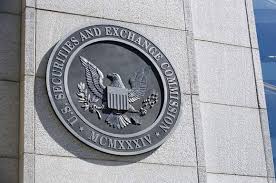The SEC’s Return to Accounting Fraud Enforcement
 Just like the ups and downs of the business cycle, SEC enforcement of accounting fraud cases follow an up and down trend as well. For example, during the financial crisis, SEC enforcement of accounting fraud cases took a back seat to enforcement actions surrounding disclosure and conflicts of interest in relation to the financial meltdown.
Just like the ups and downs of the business cycle, SEC enforcement of accounting fraud cases follow an up and down trend as well. For example, during the financial crisis, SEC enforcement of accounting fraud cases took a back seat to enforcement actions surrounding disclosure and conflicts of interest in relation to the financial meltdown.
The SEC, in the last two years, has returned to bread and butter accounting fraud cases. In 2015, the SEC brought enforcement actions against 191 defendants, an increase over 2014. With this renewed focus, companies face significant risks, along with accountants, auditors and audit committees.
One of the reasons for this return to accounting fraud enforcement is the rise of technology companies and critical valuations surrounding start up companies. The “Silicon Valley” impact of innovation and obsession with astronomical valuations has masked a marketplace where the number of failures far exceeds the number of success stories. Almost three-quarters of failed startups die within two years after their last financing. The SEC is actively policing this market for accounting irregularities because of the impact that market failures has on employees, investors and communities where the start up companies operate.
Aside from technology innovation, the SEC itself has improved its capability to gather large amounts of data and analyze such information for potential accounting issues. The SEC has developed state-of-the-art analytical systems to review financial filings for red flags and potential issues of concern quickly and efficiently. Specifically, the SEC has new tools such as its Corporate Issuer Risk Assessment (CIRA) tool, which allows the SEC to review more than 100 different accounting methods and metrics to examine potential red flags of suspicious behavior.
SEC staff has increased its ability to identify anomalous patterns in financial statements for follow up inquiries. SEC staff can quickly benchmark such reporting patterns against peer companies to refine its focus on potential accounting irregularities. The CIRA can be used in conjunction with other sources of information, such as whistleblower allegations, to identify potential problem areas among financial reports.
As part of its accounting fraud enforcement initiative, the SEC is focusing on two important gatekeepers – the audit committee and outside auditors. Each has a responsibility to ensure high-quality and accurate financial reports. To avoid a chilloing effect, the SEC has reassured audit committee members and outside auditors that the SEC does not intend to second-guess good faith judgments but intend to initiate enforcement actions when audit committees fail to carry out their responsibilities or outside auditors violate relevant auditing standards.
 To avoid the SEC crosshairs, audit committee members have to (1) insist on independence from their audits and respond carefully when auditors challenge management calculations; (2) enforce a robust financial reporting process and challenge management when appropriate; and (3) respond quickly to investigate potential misconduct in the financial reporting process; (4) ensure that an independent investigation is conducted of any potential misconduct so that the audit committee can reach its own conclusions and determine the appropriate response to such misconduct.
To avoid the SEC crosshairs, audit committee members have to (1) insist on independence from their audits and respond carefully when auditors challenge management calculations; (2) enforce a robust financial reporting process and challenge management when appropriate; and (3) respond quickly to investigate potential misconduct in the financial reporting process; (4) ensure that an independent investigation is conducted of any potential misconduct so that the audit committee can reach its own conclusions and determine the appropriate response to such misconduct.
Technology companies with large valuations and market capitalizations have created a challenging enforcement environment. The SEC’s ability to keep pace with these companies is improving and businesses can expect greater scrutiny over their financial reports.
















1 Response
[…] via The SEC’s Return to Accounting Fraud Enforcement – Corruption, Crime & Compliance. […]